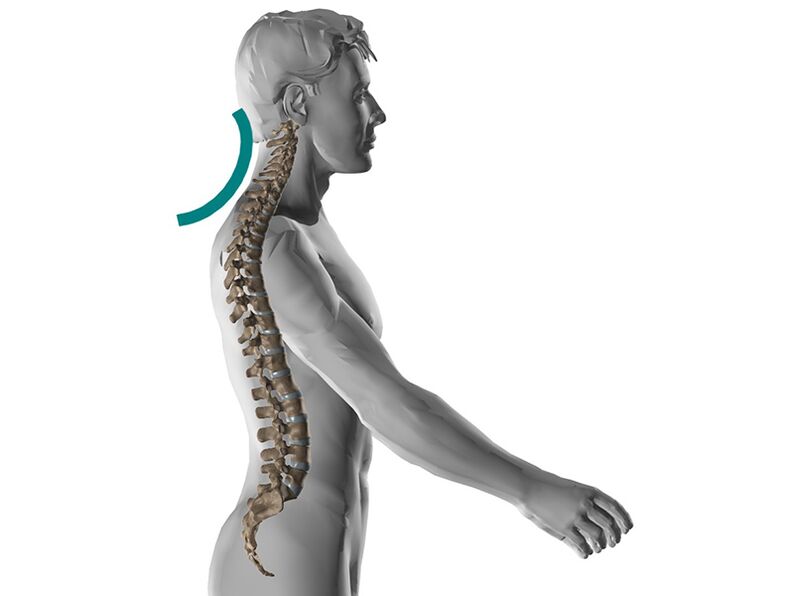Cervical osteochondrosis is a common degenerative-dystrophic disease that develops in the cervical spine. In women, weak muscle ligament as well as thin bone tissue lead to faster development of the pathology. Symptoms of cervical osteochondrosis are pronounced in women. When they appear, treatment should be started immediately.
Causes of cervical osteochondrosis in women
In women, cervical osteochondrosis can develop in the presence of a number of provocative factors. The development of the pathology is diagnosed regardless of the age of the patient. The causes of osteochondrosis in women are as follows:
- insufficient physical activity;
- sedentary work;
- Sedentary lifestyle.

The occurrence of pathology in the cervicothoracic region is diagnosed with frequent hormonal failures. If the load on the spine increases during childbirth, it leads to the occurrence of the disease. Lifelong malnutrition is a cause of metabolic disorders. All this leads to the development of the disease.
Older women are at risk of developing the disease. Hypothermia is a fairly common cause of osteochondrosis. The disease can also develop with injuries. Injuries are used to diagnose the incidence of disc disease in women. Pathology often develops in the background of infectious processes.
Osteochondrosis is caused by various factors in the better sex. That is why you need to take responsibility for your health.
Signs of osteochondrosis in women
Signs of osteochondrosis in women appear after a certain period of time after the onset of the degenerative process. Often, the vertebrae protrude beyond their limits, leading to a worsening of the situation as they thin out in parallel. Pain underlying the inflammatory processes in the intervertebral discs is diagnosed, which can be permanent and temporary.
During the disease, the brain tissue is damaged, causing headaches. When the vertebral artery is compressed with cervical osteochondrosis, dizziness can be diagnosed. Women of the weaker sex often experience changes in blood pressure. Women may experience fainting during the development of cervical osteochondrosis.
In some cases, patients with pathology suffer from hearing loss. In women during osteochondrosis, symptoms take the form of changes in gait. The pathological process leads to frequent mood swings. Most patients experience severe fatigue, even while performing daily tasks. Symptoms may include reduced vision. When the disease noticeably worsens the condition of the teeth, leading to the development of various dental diseases. Some people have cramps in the muscles of the back and neck. With this pathology, the intensity of the sound can be reduced.
The disease negatively affects the condition of the brain, leading to deterioration of memory and thought processes. Some patients experience snoring during sleep. This is due to the fact that there is tension in the muscles of the neck during sleep. The most common of these symptoms is radical syndrome. Its appearance is diagnosed when the nerves in the cervical vertebrae are compressed.

As the disease affects the nervous system, it leads to numbness of the fingers, making it impossible to perform the most important tasks related to fine motor skills. Symptoms appear as weakness in the arms. If the osteochondrosis of the chest or lumbar region is diagnosed, it leads to back pain. If the neck region is affected, the head or neck suffers. The pain can also radiate to the back and limbs. Sleep disorders are often diagnosed.
After the age of 50, the signs of osteochondrosis in women are more pronounced.
Treatment of cervical osteochondrosis in women
Women with cervical osteochondrosis should be treated immediately if symptoms occur. First, the joint pain disappears. Appropriate tests should be performed before treating osteochondrosis in women. This makes it possible to designate rational treatment.
The main treatment only starts after the patient has been fully examined. One of the most common methods of treating joints is drug therapy. In this case, the use of topical preparations is recommended.
When a disease occurs, the main treatment is started only after consulting a doctor. If topical preparations are not effective enough, it is recommended to use medicines in tablet form. In most cases, after such treatment, the pain disappears completely. Anesthetic injections are recommended for severe muscle pain.
In most cases, the main treatment will help relieve the pain. But you can use folk methods to increase efficiency. The use of funds is recommended to relieve shoulder and neck pain. The characteristics of the treatment of osteochondrosis of the neck require the use of massage, medication and folk methods. Physiotherapy is also effective. With the ineffectiveness of gymnastics, yoga and other therapeutic methods are prescribed. Methods such as water aerobics are also recommended to treat the disease.
Preventive measures
In order to avoid the development of pathology, it is recommended to prevent it in time. It consists of following a number of simple rules. Regular exercise is recommended to help develop the upper shoulder girdle as well as strengthen the back. Proper physical activity allows a woman to avoid illness. Regular outdoor walks are recommended.
Swimming is an effective preventative method. If a woman has a sedentary job, it is recommended to get up regularly and do exercises. Every woman should follow a rational and proper diet. It is recommended to eat foods rich in vitamins and minerals. When the first signs of the pathological process appear, a doctor should be consulted. Timely identification of the pathological process is the key to successful treatment of the pathology.
Osteochondrosis is characterized by severe degenerative lesions of the cartilage and joints. In women, the pathology is accompanied by marked signs. At the first signs, the patient should consult a doctor, who will prescribe rational treatment after a proper diagnosis.































